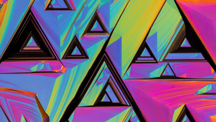Spectral Analysis of Resin Imitation Ivory

The application of spectroscopic techniques in solving gemological challenges is becoming more routine since more data is needed than standard gemological testing can provide. For example, resin is composed of a variety of complicated chemical components and, while basic testing can identify whether the material is resin, further detailed examination must be undertaken to obtain the specific chemical composition.
A client submitted three “ivory” items for identification, a bead bracelet and two seal stamps (figure 1). This case is similar to the “resin imitation ivory with a pseudo ‘engine-turned’ structure” reported previously (Fall 2019 Lab Notes, pp. 419–421). Standard gemological testing revealed an RI of 1.54 (spot) and an SG of 1.23, with parallel linear striations, all very similar to the properties obtained from the samples in the case referenced above. Natural ivory normally indicates an RI of 1.54 (spot) and an SG of 1.85, with Schreger lines. By comparing with this case, further examinations were taken by the following procedures.
FTIR and Raman spectroscopy were used to analyze the differences between resin imitating ivory and natural ivory reference samples with a known provenance. These results were compared with those of the client’s submissions.

As shown in figure 2 (top), mid-FTIR reflectance spectra from the natural ivory of known provenance revealed peaks at 1044, 1447, and 1559 cm–1 (related to biogenic hydroxyapatites); 1658, 2850, and 2919 cm–1 (consistent with collagen); and 3310 cm–1 (from CO32–) (Z. Yin et al., “A comparison of modern and fossil ivories using multiple techniques,” Spring 2013 G&G, pp. 16–27). The client’s resin imitations revealed peaks at 702, 1126, 1284, 1380, 1462, and 1730 cm–1, characteristic of ester group alkyd resins (figure 2, bottom) (S.M. Cakić et al., “Investigation of the curing kinetics of alkyd-melamine-epoxy resin system,” Progress in Organic Coatings, Vol. 73, No. 4, 2012, pp. 415–424), and 2932 cm–1, consistent with CH stretching. These results were significantly different from those obtained from known samples of ivory, as detailed above.

Raman analysis of the natural ivory revealed peaks at 428, 586, 852, 961, 1244, and 1664 cm–1 (figure 3, top), whereas the submitted resin samples displayed peaks at 621, 650, 1001, 1038, 1162, 1186, 1449, 1599, and 1724 cm–1 (figure 3, bottom). The spectra from each were sufficiently different to allow a quick and accurate separation.
These spectral comparisons provide readers with a reference when separating ivory from some resins. However, it is still important to apply standard gemological testing techniques during the initial examination while staying alert to the continual developments likely taking place with resin imitations. Spectral analysis plays an essential role in the differentiation process, especially in cases where more care may be needed.



